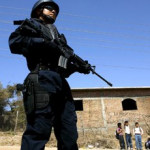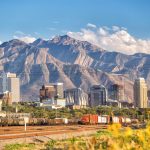By Sean Jamadar
America’s domestic stance on drugs and its foreign policy contradict one another. The government targets small time dealers but never attempts to go after the king pins, and in summary, the war never ends. While the people who should be targeted: are paid informants, allies in foreign countries, or criminals who have paid off the oval office. These entities escape justice because their objectives align with America’s national security.
President Nixon declared a War on Drugs when he proclaimed “America’s public enemy number one in the United States is drug abuse. In order to fight and defeat this enemy, it is necessary to wage a new, all-out offensive.” To fight this war, congress rewarded him 100 million dollars. Nixons successor, Ronald Regan, stated that his domestic policy on drugs would target the consumer because he felt that “[it] [was] far more effective [to] take the customers away than [to] try [and] take the drugs away from those who want to be customers”.
The same government that was funding illegal drug production: in Indochina, Afghanistan, Nicaragua; and Mexico; was the same government that was calling for “an ‘unprecedented’ expansion of police, prosecutors, courts, and prisons to ‘[make] streets safer and drug users more accountable for their actions”. The increase of funds directed at combating illegal drug sales, in addition to the harsher laws created by the government, have made the “War on Drugs” a multifaceted complex of mass disproportions:
“The United States leads the world in the number of people incarcerated in federal and state correctional facilities. There are currently more than 2 million people in American prisons or jails. Approximately one-quarter of those people held in U.S. prisons or jails have been convicted of a drug offense. The United States incarcerates more people for drug offenses than any other country. With an estimated 6.8 million Americans struggling with drug abuse or dependence, the growth of the prison population continues to be driven largely by incarceration for drug offenses.” – See more at: Drugwarfacts.org
If you were to place the War on Drugs in the same category as America’s fight in Afghanistan, or any other foreign conflict, it is the longest war in US history and has cost the taxpayers more than a trillion dollars.
President Eisenhower warned the American people of a military-industrial complex because the profiteering from war was leading to a state of mass disproportions. Succeeding presidents failed to heed his warning or apply it to the War on Drugs. Acccording to Noam Chomsky, a political philosopher and world renowned linguist from MIT, the war on drugs threatens democracy because:
“The Drug War is an effort to stimulate fear of dangerous people from who we have to protect ourselves. It is also, a direct form of control of what are called “dangerous classes,” those superfluous people who don’t really have a function contributing to profit-making and wealth. They have to be somehow taken care of…So there are many factors making the Drug War a war against the poor, largely poor people of color. And those are the people they have to get rid of.”
By analyzing Eisenhower’s warning about the military-industrial complex and changing the military jargon to fit Chomsky’s drug-war industrial complex, a new warning is established. The war on drugs threatens democratic governance because
“we have been compelled to create a permanent [crime-control] industry of vast proportions. [Currently there are 62,700: Judges, Mediators, and Hearing Officers; 728,000 lawyers; 93,200probation officers and over 794,300 police officers],millions of men and women [who] are directly engaged in the [prison-industrial] establishment..
This conjunction of an immense [correctional] establishment and a large arms industry is new in the American experience. The total influence — economic, political, even spiritual — is felt in every city, every State house, every office of the Federal government. We recognize the imperative need for this development. Yet we must not fail to comprehend its grave implications.
Our toil, resources and livelihood are all involved; so is the very structure of our society.
In the councils of government, we must guard against the acquisition of unwarranted influence, whether sought or unsought, by the [drug war industrial]complex. The potential for the disastrous rise of misplaced power exists and will persist.”
The drug war industrial complex is powerful − It employs individuals through multiple fronts. On the illegal side you have the individuals who produce, transport, and sell drugs. Then you have government officials who are employed to curtail this trade. Lastly you have the businesses that are complimentary: private jails, law firms, banks, gun salesman, and even the large pharmaceutical companies. The money has a trickledown effect that reaches people of every social class .The government’s harsh attitude on drugs is not in the benefit of the American citizen. In reality, the prohibition of drugs is a marketing scheme for the largest corporations in the world to profit from the drug war industrial complex.
Keeping this in mind, America is the world’s largest importer of legal opium. To sell the drug one must have a license and be in good standing with the government. Meaning the legal drug trade is a government controlled monopoly.
Big pharmaceutical companies are the largest drug dealers on the planet because they have a legal right to sell “sick” customers drugs, which are intended to “cure” them or “help” them with alleviating their pain. Any threat to their profits are departmentalized to the government security forces paid with by our taxes, also known as police officers, who imprison or kill anyone resisting the norm. Pharmaceutical companies along with other drug profiteers such as the tobacco and alcohol industry, stand to lose profits if the illegal narcotics trade takes place. In accordance, when tracing the financial backers of the anti-drug organizations we learn that the supporters are: big pharma, alcohol, and big tobacco .
Tobacco, alcohol, and pharmaceuticals are substitute goods. Meaning the consumer can replace the legal drugs with a prohibited substance at a cheaper price. This is highlighted in a study done by Amanda Reiman, from the University of California, who concluded that “medical cannabis patients [engage] in substitution by using cannabis as an alternative to alcohol, prescription’ and illicit drugs”. Instead of having only a limited variety of party favors, the illegal substances expand the purchasing power of the consumer.
With so many choices, the consumer has a hard time deciding how they want to alleviate their “pain”.
Chances are the consumer will support the local businessman or the person who could give them something at a cheaper economic cost. In the end, the purchasing power of the consumer takes away profits from the companies in legal standing. Any sale done through an unlicensed party threatens possible revenue because these transactions drive the price downwards, an increase in the supply causes a decrease in demand.




 Creative Commons Attribution
Creative Commons Attribution